2020, the year of COVID-19, spared no one. It had a devastating impact on our economies and hit small and big businesses equally hard. But it was the year of adaptation, learnings, determination, and for many, luck!
The year pushed business owners out of their comfort zones and forced them to try new strategies to keep their businesses afloat. This approach helped most of them survive the storm better than others.
Without a doubt, companies have adapted and grown stronger. The upcoming year isn’t devoid of challenges. But if we’ve braved the pandemic, these challenges can be overcome too.
During these unprecedented times, one thing that doesn’t change is our dependence on customers. They are the ones who have and always generate revenue for businesses. While acquiring new customers is critical, getting your existing ones to stay loyal to you and purchase more is even more profitable.
Let me explain!
Your current customers are 50 percent more likely to try a new product and spend 31 percent more. Moreover, the profitability of engaging an existing customer is 60-70 percent. On the other hand, the probability of conversion for selling to a prospect is just 5-20 percent. Hence, it’s wise to focus your efforts and resources on converting one-off customers into repeat ones.
Yet, 44 percent of businesses spend money on customer acquisition versus only 18 percent focus on increasing the customer lifetime value (CLV) of their existing ones.
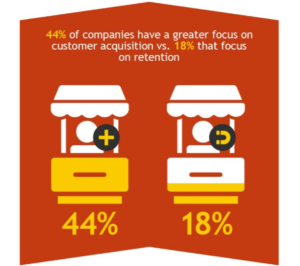
Fortunately, it’s possible to keep customers happy and loyal to your brand, often without bending over backwards. Read on to learn a few tried and tested strategies to convert your one-time customers into repeat ones.
1. Simply follow up
At times, the lowest-hanging customer retention strategy you can adopt to encourage repeat purchases is to ask. And the best place to start is your customer’s inbox.
Consider these facts:
- Most white-collar workers spend an average of 2.5 hours a day checking their inboxes at work.
- An Adobe Email Usage Study revealed that Americans spend around five hours a day checking emails.
- Consumers are comfortable opting into email relationships with brands as they know they can make choices, such as the frequency of receiving messages or unsubscribing. Hence, email is the most preferred channel.
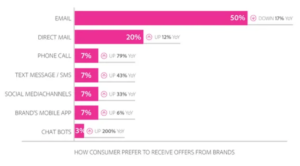
- Finally, emails aren’t restricted by any fitful algorithms.
The aforementioned facts make it critical for marketers to use this effective channel to remind their customers of offers, deals, and updates.
So, how often should you send a follow-up email to customers? Curated research conducted by CoSchedule, an agile marketing tool, reveals that sending two to three emails per month is ideal for most industries.
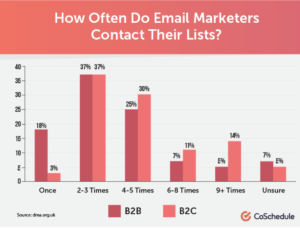
However, most customers want these updates to come more frequently.

The best way to determine your email frequency is to take guidance from the best practices as a starting point and then adjust it as per your experience. Use tools like MailChimp, Campaign Monitor, and Active Campaign to track your email marketing performance month on month.
Check out a few examples of follow-up emails I receive regularly.
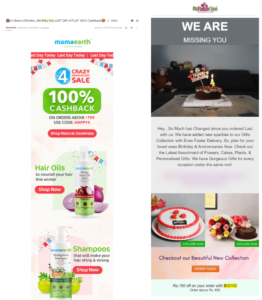
Don’t shy away from following up with your customers. Use discounts, new product launches, and special offers as an excuse to keep them engaged and encourage them to continue making purchases.
2. Introduce customer loyalty programs
Loyalty programs are aimed at strengthening the bond with customers and inspiring repeat visits and purchases. It is a small incentive for them to stay with you.
Reward one-off customers for choosing your brand over others. Give them a reason to come back to you. For instance, launch a customer loyalty program where the customer can sign up for discounts and other special offers.
Similarly, if a customer had tried one of your offerings, lead them to try others by introducing a package deal. This will give them a taste of the other new and exciting services you offer, encouraging them to purchase more.
Business management platform vcita has introduced a “Packages” feature that allows SMBs to bundle several services together and sell them as a package deal online at a discounted price.
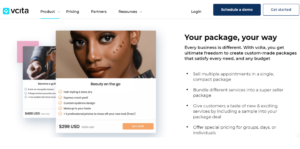
Packages offer buyers the convenience of purchasing or subscribing to multiple related products or services all at once. More often than not, the package is priced at a lower rate than the total of each component. This makes it an attractive offering, stimulating interest, and demand.
Count on such software solutions to improve the effectiveness of your loyalty programs, solidify customer relationships, and improve cash flow.
3. Offer exceptional products/services
It’s critical to make customers feel positive and motivated about using your brand. One of the primary reasons why customers stick to a brand is the service they offer.
A Yopto survey shared that it’s the number one reason for customers to stay loyal.
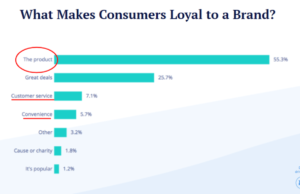
In fact, a Salesforce study revealed that 81 percent of customers are more likely to be your repeat customers after experiencing good service.
Train your customer service team to understand the processes and execute their job to the best of their abilities. Offer guidelines on how they can offer exceptional day-to-day service and build strong relationships with customers. This will offer enough content for future conversations, thereby allowing you to engage customers.
4. Use customer reviews as a source of insights
If you want your one-time customers to come back, offer them what they want. No brainer, right? But this is a fact!
Customer reviews and ratings are an essential marketing tool that can help you understand what customers like or dislike about your brand. They can help improve business reputation and create compelling customer experiences that strengthen brand loyalty. Hence, besides responding to reviews promptly it’s critical to use them as a source of insights for your marketing communications.
AI and sentiment analysis tools like Trustpilot can help you scan through the reviews and identify specific trends. This allows businesses to improve customer experience, boost revenue, and retain customers.
For instance, reviews can help you in fixing a product flaw, introducing a new feature, and also highlighting an unsung feature. Similarly, a detailed review content analysis will enable you to spot the terms and commonly-used adjectives.
Check out this review on the Bed Bath & Beyond website.
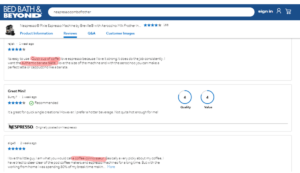
The highlighted words in the customer reviews can be sprinkled throughout the brand messaging to increase conversions.
5. Treat customers as a community.
Customers see brands as part of their identity. Establish a strong sense of brand loyalty by positioning your business as representing a community.
Check out how brands like The Man Company and Beard Brand share a message of self-improvement and grooming for their target audience—the urban beardsmen!
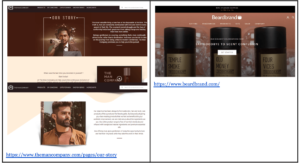
Similarly, Chambor advertisements and marketing messages are targeted towards the ‘chic women of today.’
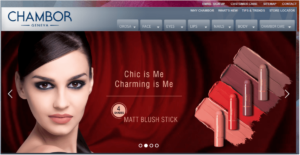
Despite their differences, customers want brands to leverage various channels to help people from diverse backgrounds and perspectives connect and unite. Use your social page to build communities, spark meaningful conversations, and even raise awareness around important issues.
When you link your products and services to a community, it creates a sense of ownership among customers, encouraging them to stick with you.
6. Sweeten the deal for those who shout out for you.
Most businesses are using the ‘tag-a-friend’ post or contests to encourage customers to share content or mention their brand.
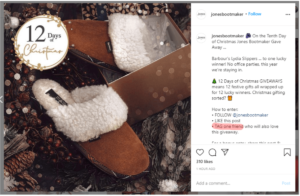
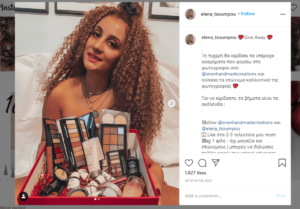
Encourage your followers to mention your brand on social media. This is a great way to convert customers into marketers and brand advocates. Any customer willing to refer your brand on social media trusts you and is signaling themselves as your loyal customer.
However, make sure you couple these shout outs with an incentive to enjoy more such organic mentions just the way Milk Makeup does it.
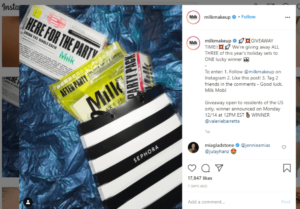
7. Get real with customers.
Customers, whether one-time or loyal ones crave personal connections with brands. Yet, in a survey by The Drum 78 percent of customers felt that brands never emotionally connect with them.
Personal connections matter more than ever for customer,s and they look up to brands to lead the way. Focus on shifting your strategic emphasis on social platforms from revenue to relatability. To build a strong connection with your audience, strive to engage with people on an emotional level.
Remember:
- Customers want more than product information. They want to learn about the people who make these brands. They want to get behind the scenes and foster a relationship with people who make up their favorite brands.
- Think beyond merely selling your products or services. Share behind-the-scenes posts to give a human face to your business. Line up posts introducing your team and their role in delivering exceptional brand experiences.
- Check out how Magenta and Co. constantly makes an effort to look inward for new spokespeople. This makes their brand more humane and their audience loves the real people who bring a brand to life.

- Listen to what people have to say and participate in conversations. Use social listening tools like Mention, Hootsuite, and Keyhole to track your brand, name, and product mentions and participate in meaningful brand conversations. This will not just help you craft content but also make your audience feel connected to your brand.
- There’s no ‘perfect’ way to establish a connection with your customers. Use unconventional ways to show off your human side.
At times, even owing up a mistake can make your business look authentic just like in the case of Chewy, one of the top pet food brands in the U.S.
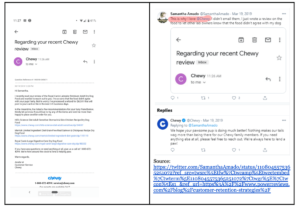
Summing up.
The cut-throat environment and the present challenging times make it tough for businesses to outdo each other and win new customers. Also, acquiring a new customer is more challenging and more expensive than retaining an existing one. Your one-time customers are the ones who have the potential to give you recurring revenues. Therefore, it’s high time you invest in converting them into trustworthy revenue generators.
Use the strategies shared in this post to convert your first-time and one-off customers into forever ones.




